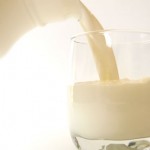 Iron in milk! Popeye would just grab his can of spinach. There has been some confusion when it comes to milk and its content of iron, so let’s set the record straight today. In a previous post, Raw Milk – 8 Reasons It Is “The Perfect Food”, we mentioned why raw milk was so goof for you. Lets add reason 9 and 10 today.
Iron in milk! Popeye would just grab his can of spinach. There has been some confusion when it comes to milk and its content of iron, so let’s set the record straight today. In a previous post, Raw Milk – 8 Reasons It Is “The Perfect Food”, we mentioned why raw milk was so goof for you. Lets add reason 9 and 10 today.
Pasteurized Milk And Iron
Many people understand that there is just about no iron in the common Pasteurized Milk you purchase for your local market. You know that they are right, pasteurized milk is very low in iron content. The common practice of feeding the cows grain instead of iron rich grass helps to keep the content of iron in the milk low. But guess what? Pasteurized cow milk even helps to remove iron from the blood. The process of pasteurizing milk destroys the enzyme activity in milk. Pasteurized cow’s milk makes it more difficult for the body to absorb iron from other foods and can cause the intestines to lose small amounts of blood. Iron deficiency anemia can be an important issue especially in small children when their rapid growth demands larger amounts of iron daily.
Pasteurization also, makes calcium and other minerals harder to absorb. One method of testing to see if milk has been adequately pasteurized is to test to make sure that phosphates have been completely removed. Phosphates are essential for the absorption of calcium.
Raw Milk & Iron
In Raw Milk the amount of iron is much higher. In fact it is around 194% greater than pasteurized milk. While raw milk may not be the largest supplier of iron in the nutrition area it is not about void like pasteurized milk. In raw milk the enzymes are alive and well, which aids in the absorption of minerals. Remember the phosphates that are sure to be destroyed in pasteurized milk, well they are still around and able to help in the absorption of calcium. Now I understand why we used to be told drink our milk because it is good for our bones. They just meant “raw” milk.
Of those enzymes that are alive and well, let me introduce you to one, Lactoferrin.
Lactoferrin has the unique ability to bind to iron, a key element also utilized by tumors and numerous pathogens for growth and reproduction. So think of lactoferrin as an executioner of pathogens. This ability to scavenge iron is Lactoferrin’s ace in the hole. Lactoferrin acts as an anti-oxidant, displays anti-fungal/ anti-bacterial properties all by ridding its environment of free iron. Without iron, pathogens (bad guys) can not grow and multiply. Studies are now being done to understand how lactoferrin can limit or suppress the spread of cancer cells. Lactoferrin does not remove iron from the body and as it degrades it re-releases the iron it absorbed back into the body allowing the body to process it as needed.
So for now keep in-mind that raw milk contains lactoferrin in small but effective amounts to protect itself, and if you drink it, to protect you, too!




Jeff, I have a question. Does raw milk have arethropoetin in it? And if it has iron, is it in the form of arethropoetin? My mom is anemic. Can the iron in the milknhelp her feel better? She has kidney disease.
Thanks,
Myra